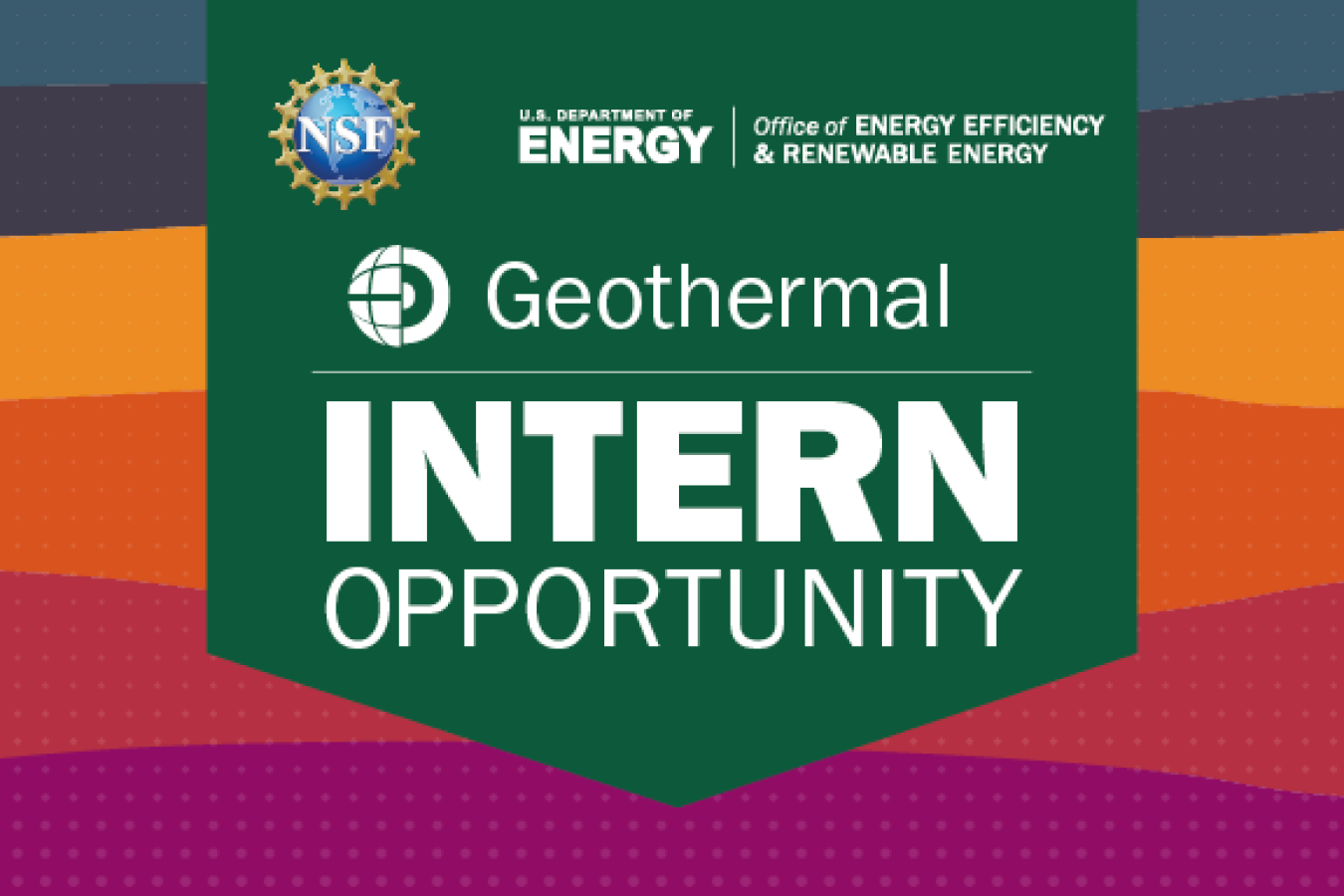Learn how the first cohort of the NSF-DOE Geothermal INTERN opportunity was shaped by the quality colleagues and real-world applications of their research during their internships.
Geothermal Technologies Office
November 7, 2023
Through the National Science Foundation’s and U.S. Department of Energy’s (DOE) Geothermal INTERN opportunity, graduate students in STEM fields get to do what few have done before: create a bespoke internship applying their academic interests in the geothermal industry.
Our first blog in this series discussed why geothermal inspires and excites the members of the first cohort. Now let’s dive into what the students gained from their internships!
Hands-On, Real-World Geothermal
One key theme in the students’ reflections: Putting their scholarly expertise to real-world use was invaluable. Anjali Thota voiced how much she gained in practical knowledge: “Collaborating with the Illinois State Geological Survey through this program has given me access to their extensive geological database, which is essential for my numerical modeling work, […and allowed] me to collect real-world data, significantly enhancing my research skills.” Kaushik Pradhan developed a deeper appreciation of the relevance of classroom concepts in his internship at the Pacific Northwest National Laboratory (PNNL), where he worked on real-time monitoring of hydraulic fractures: “It is amazing to see how even seemingly small ideas can drive significant innovations on a larger scale.”
Working outside of a purely academic setting was also an enlightening part of students’ experiences. In his internship with the Geologica Geothermal Group, Shashwat Maharjan noted the different paces of academia and industry. “Understanding geothermal energy from books is one thing, but actually working in the field is a whole different experience,” he shared. “In industry, everything moves quickly, focused on delivering a tangible product.” Santiago Rabade, who interned with Zanskar Geothermal & Minerals, Inc., observed another distinction between the two worlds: “Although academia and industry [both] strive to get the best result possible, the incentives and goals differ.” (You can read more about Rabade’s experience in this media interview). Asenath Kwagalakwe found a good fit for her internship at Minaean SP Construction Corp., which was collaborating with Uganda’s Ministry of Energy and Mineral Development on exploring for geothermal resources in the Katwe-Kikorongo Volcanic Field. She notes that her internship experience was an education in both applying her research field and understanding how business and governmental perspectives intertwine in geothermal projects.
Geothermal People Rock!
Every student in the cohort talked about the benefits of rubbing shoulders with bright, dedicated colleagues in the geothermal industry. Justin Tully and Prabhav Borate both called out the pragmatic benefits of gaining access to professional networks and insight on what career pathways fit students’ skillsets. But students also note relational benefits in directly experiencing the warmth, generosity, and passion of the people working in this field.
Maharjan found it humbling to be “surrounded by incredible individuals who have paved the way for today’s geothermal advancements.” He wasn’t observing their work from the outside looking in; his colleagues welcomed him in and invested in him: “I've been fortunate to collaborate with two exceptional mentors during my time at Geologica Geothermal Group. They've not only accelerated my learning curve within the field but have also generously welcomed even my most basic inquiries.”
Pradhan, who interned with PNNL because he was amazed by its geothermal team, found that team to be successful not only because of their technical prowess, but also because of their communication and teamwork. “What stood out most was the direct real-world application of the research conducted at PNNL and the impressive structure of the teams working collaboratively to address some of the world's most pressing challenges,” he shared. “In terms of their impact, these laboratories are nothing short of transformative. They are at the forefront of scientific research, driving forward technological advancements, and taking on monumental global challenges.”
John Acevedo likewise saw the power of collaboration in action at Oak Ridge National Laboratory (ORNL), where he witnessed different departments reaching out to make use of each other’s expertise and push the boundaries of their experiments. He also found a workplace he wants to be a part of in the future:

“Every [ORNL] faculty member that I came across, from the people working in research to those serving us food in the cafeteria, even the internal taxi drivers, all spoke with such passion and kindness. It felt as if I had been working here for years, as if I was a part of their family. Whenever I was asked about my [research or] future aspirations […] they gave me their full undivided attention, provided insight into their experiences, and […] even talked about future research projects that we could go into or ways to help develop my current research.”
John Acevedo
University of Texas at Rio Grande Valley
So, what advice do these students have for others looking to start building a career in geothermal energy? Check out our next blog in this series to find out!


